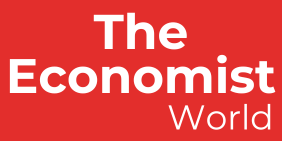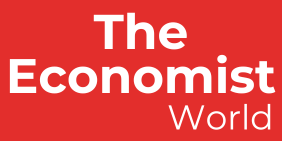Unlock the Editor’s Digest for free
Roula Khalaf, Editor of the FT, selects her favourite stories in this weekly newsletter.
President Donald Trump’s global trade war is expected to weigh heavily on April’s US jobs report, with hiring forecast to be sharply lower for the month.
Friday’s data is expected to show that hiring slowed significantly this month, according to a survey of economists by Bloomberg. The US is forecast to have added just 125,000 jobs in April, a significant drop from the 228,000 added in the previous month.
April’s data will capture cuts to the public labour force exacted by Elon Musk’s so-called Department of Government Efficiency, which has been intent on slashing government spending. The figures will also reflect any slowdown in hiring that has happened as companies plan for hits to profits from Trump’s wide-ranging tariffs.
But the damage to the labour market is still expected to be limited, and may remain that way given the president’s climbdown on tariffs, with a 90-day pause for most countries and his apparent willingness to negotiate far lower rates on China.
For that reason, analysts expect the unemployment rate to remain at 4.2 per cent, and for this to be a factor in preventing the Federal Reserve from cutting interest rates next month.
“We do not think that the April jobs report nor the Q1 GDP data will be conclusive enough for the Fed to act. We expect hiring to moderate amid the uncertainty but be sufficient to keep the unemployment rate steady at 4.2 per cent,” wrote analysts at BNP Paribas. Kate Duguid
How hard will US tariff uncertainty hit EU growth?
On the face of it, policymakers at the European Central Bank next week are likely to have reason to celebrate that they are on track to meet their medium-term inflation target of 2 per cent for the first time in half a year.
Economists polled by Reuters on average predict that annual inflation in April, to be reported by Eurostat on Friday, will have fallen to 2 per cent, down from 2.2 per cent in March. Such a result would be the latest sign that upwards pressures to consumer prices have finally been tamed.
But ECB president Christine Lagarde is unlikely to go on a victory lap, as the 10 per cent universal tariffs Trump imposed on most imports — combined with concerns over even higher rates should the US and its trading partners fail to strike a deal — could dent economic sentiment as well as growth prospects.
A sharp drop in the oil price in recent weeks and the stronger euro could drag down inflation even further over the coming months.
“Downside risks to inflation are mounting in the near term,” Pantheon Macroeconomics wrote in a note to clients on Friday, adding that it had slashed its full-year inflation forecast by 0.2 percentage points to 2.2 per cent.
In the run-up to Trump’s so-called liberation day announcements on April 2, the euro area’s economy started to pick up speed again, with seasonally adjusted real GDP expected to have risen by 0.2 per cent compared with the final three months of 2024, according to a Reuters poll.
But the ECB, which cut interest rates by a quarter point in April, its seventh reduction since June 2024, warned that the “economic outlook is clouded by exceptional uncertainty”. Olaf Storbeck
Will the Bank of Japan signal higher rates this year?
The big question for analysts and investors ahead of the Bank of Japan’s monetary policy meeting next week is not whether there is likely to be a rise in interest rates, but whether — or how far — the fallout from Donald Trump’s trade tariffs has blown Japan off its course of monetary policy normalisation.
No economists polled by Reuters are expecting the meeting, which takes place on Wednesday and Thursday, to produce a shift from the current level of 0.5 per cent. That is despite the reading for the Tokyo core consumer price index showing April prices in the capital rose 3.4 per cent compared with a year earlier. That rate is a two-year high and a faster clip than most analysts had expected.
However, the mood of caution is clear. The BoJ governor, Kazuo Ueda, noted on Thursday that the bank would be scrutinising how various information, including the fallout from US tariffs, could affect Japan’s economy sustainably meeting the BoJ’s price goal.
Investors will be focused on the precise language the BoJ uses to define the current state of inflation, how fearful is the tone it strikes in the economic outlook statement accompanying the decision, and how clearly it sets up the possibility of a further rate rise later in the year.
On the outlook report, economists at HSBC and elsewhere are in little doubt that downward revisions to growth forecasts will be the headline.
“Meanwhile, more varied nuances are at play with respect to inflation, and so the focus will be on how officials see price trends developing in 2026 and 2027,” wrote HSBC’s economics team in a note to clients.
But Naohiko Baba, chief Japan economist at Barclays, said that the BoJ could nevertheless repeat the message that it believes real policy rates are too low, and that it will increase rates appropriately if growth and inflation are on track.
“Wages and inflation are actually ‘on track’ or even slightly stronger than expected by the BoJ, so in terms of fundamentals, the stage appears set for a rate hike at any time. In our view, it is now a matter of tariff negotiations with the Trump administration and related impacts,” said Baba. Leo Lewis


